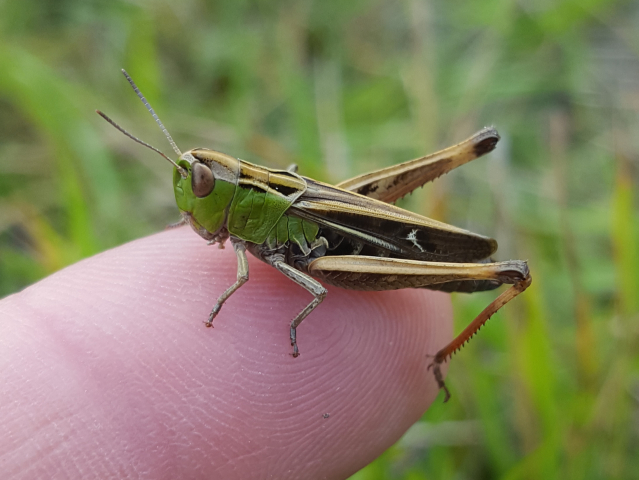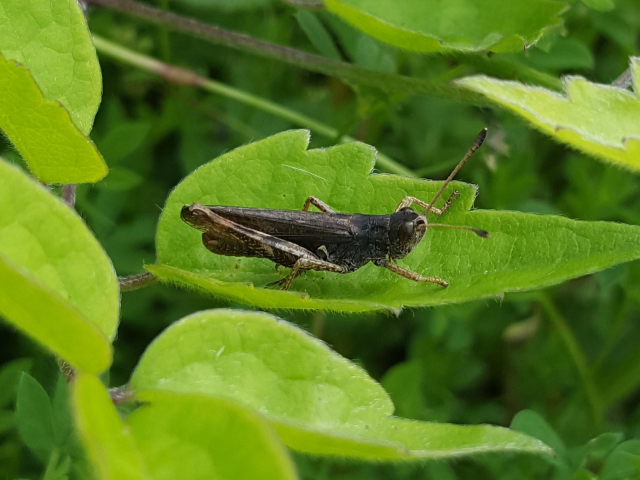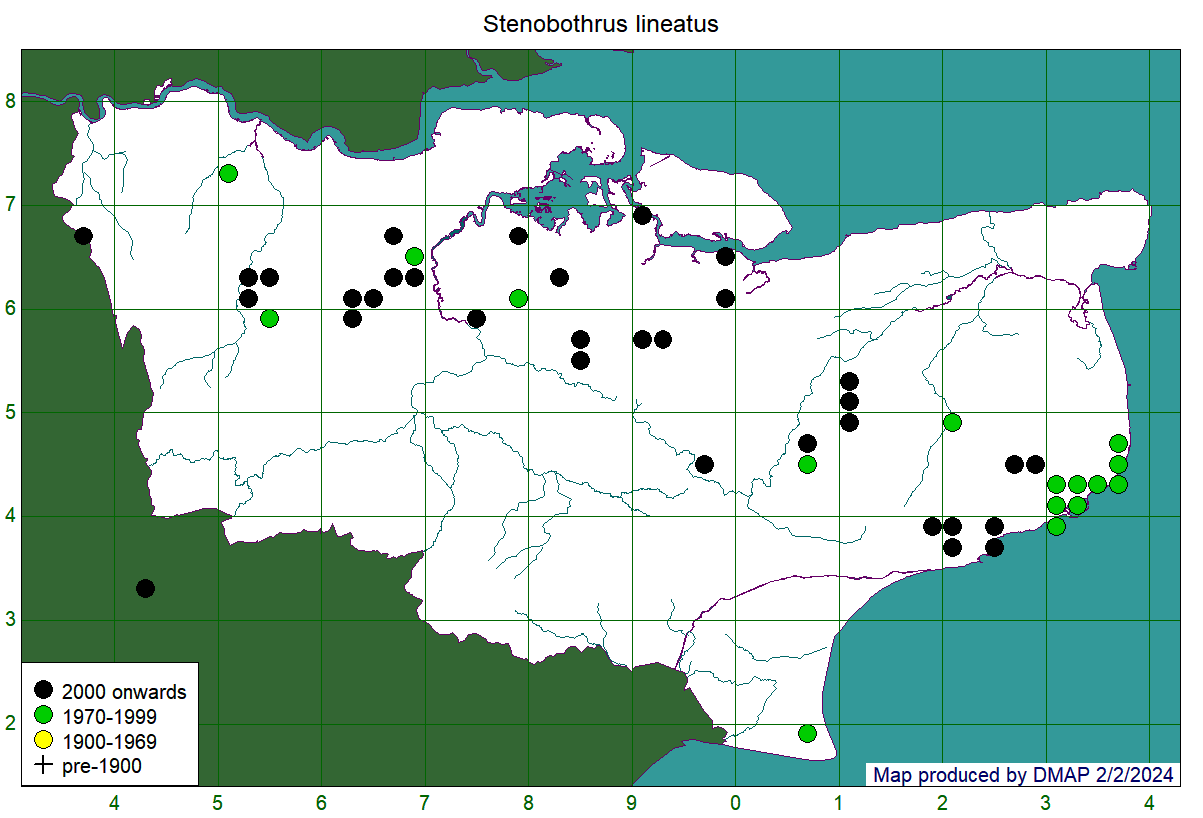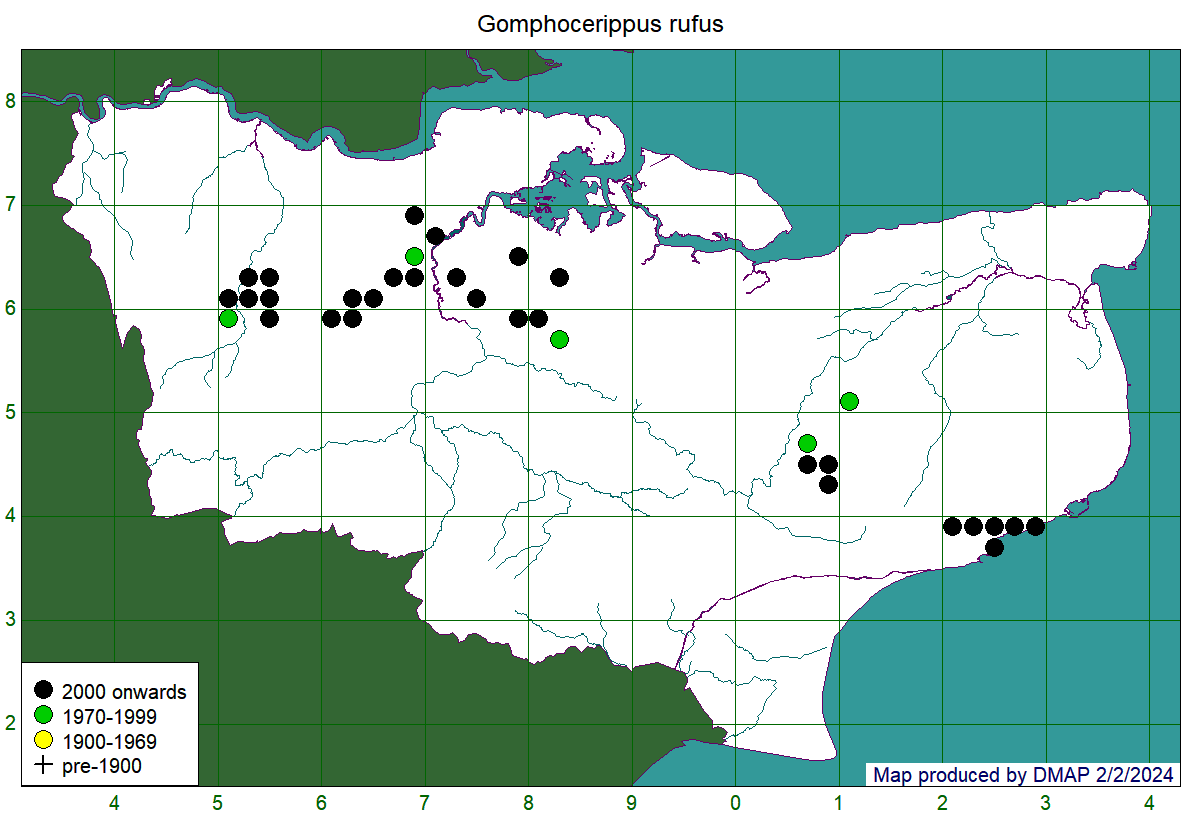Stripe-winged Grasshopper Stenobothrus lineatus

Stripe-winged Grasshopper. Photo R I Moyse.
In Kent, this grasshopper is mainly associated with chalk grassland, where it favours the shorter, more closely-grazed turf, though elsewhere in Britain it uses other dry habitats, including heathland: in Grasshoppers and Crickets of Surrey, it is noted that Stripe-winged Grasshoppers are just as widespread on the abundant grassy heathland in that county. The white stripe on the wing margin and the white, tick-shaped mark on the wing are useful features for identification, though it is useful to check the wing venation if there is any doubt about separation from Common Green Grasshopper.
This species' need for short grass means that it may be susceptible to changes in habitat management. This may explain the large number of green dots around Dover on the map below, where previously closely grazed grassland is now considerably taller and searches during summer 2022 failed to refind Stripe-winged Grasshopper. However, the species does appear to be relatively mobile (both male and female animals turned up in the author's garden in the summer of 2023, a mile distant from the nearest chalk grassland), and so might be expected to return to restored habitat.
At Queendown Warren, this species can be found together with Rufous Grasshopper, and their different habitat preferences can easily be observed, with Stripe-winged being found on the open, short turf, while Rufous occurs in the taller herbaceous vegetation around the margins.
Map showing records at tetrad (2km x 2km square) resolution. Colour of dot shows date-class of most recent record for that tetrad.
Rufous Grasshopper Gomphocerippus rufus

Rufous Grasshopper. Photo R I Moyse.
A species easily recognised by its antennae which are clubbed and white-tipped. While male Mottled Grasshoppers also have clubbed antennae, their tips in that species are not white. Rufous Grasshopper is Nationally Scarce and in Britain is largely limited to the chalk grasslands of Southern England. In Kent it is very much a species of high-quality chalk grassland on the North Downs, where its preference is for taller grassy or herb-rich vegetation. Most of its locations are on SSSI sites in the Darent Valley, around the Medway Gap, at Wye and close to Folkestone.
Map showing records at tetrad (2km x 2km square) resolution. Colour of dot shows date-class of most recent record for that tetrad.


